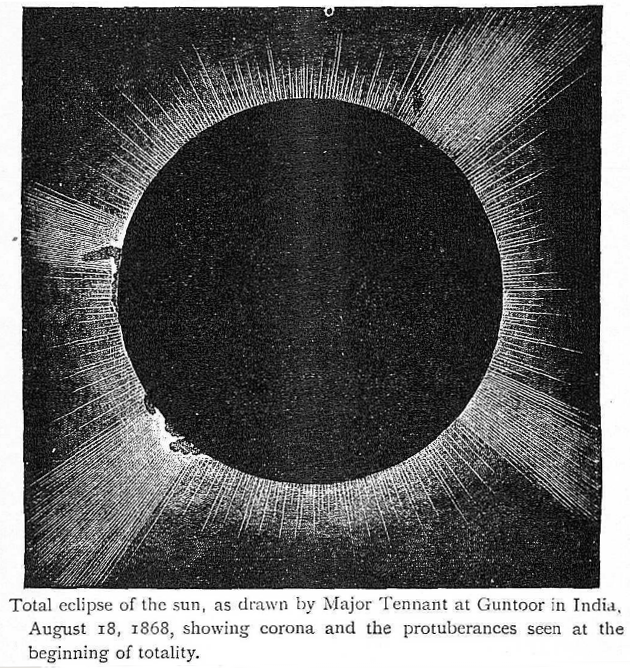March 8th/9th will see a total solar eclipse over Indonesia and the Pacific. Since astronomers have been able to predict when and where eclipses would be visible people have travelled near and far to witness these events. A total solar eclipse is both a magnificent celestial spectacle and an extraordinary scientific opportunity.
Gale’s online archives are rich in documents relating to solar eclipses. For example, searching through Gale Artemis: Primary Sources one can retrace the scientific discovery of Helium, the second most common element in the universe. Step back to August 1868 in India and thisf short telegram:

Nobody, (not even its author, the French astronomer Janssen) knew the full significance of this observation yet, but the news spread rapidly through various national and local newspapers. The same full length article titled “THE GREAT SOLAR ECLIPSE.” reporting the news on this eclipse appears 17 times in search results for this title in Gale Artemis: Primary Sources, starting on 25 August 1868 in the Daily News and ending on 30 September 1868 in the Daily Evening Bulletin (San Francisco, CA). Many shorter reports were also published. What astronomers actually observed on that day is depicted in this drawing by Major Tennant, superintendent of the 1868 British eclipse expedition at Guntur, India.

Two days later, Lockyer working in England reported similar observations in the absence of an eclipse to the Royal Society in London. After many more spectroscopic observations and experimentation, Lockyer and his colleague Frankland came to hypothesize that the observed gas included an unknown element. In 1870 they suggested the name “Helium” after the Greek god of the Sun, Helios, for this still unknown element.

Owing to the relative scarcity of Helium on earth it would take another 25 years before it was unambiguously “discovered” on earth by the Scottish chemist Sir William Ramsay. The discovery was announced at the annual meeting of the Chemical Society on 27th March 1895 and interestingly appeared in the British press a day earlier via news from Paris where a telegram announcing the discovery was read to the Académie des Sciences on Monday 25th March 1895.

By Thursday 28th March 1895 the news direct from Ramsay’s public announcement spread throughout the press with over 30 reports of various length (and tone!) located in the archive for the next fortnight, from a full article in the Telegraph (“Another Constituent of the Atmosphere.” The Daily Telegraph [London] 28 Mar. 1895: 3) to a satirical piece in Punch (“The Latest from Sol.” Punch Historical Archive [London, England] 6 Apr. 1895: 167)! This birth announcement was published in Pall Mall Gazette:

Helium went on to head the noble gas family and since has had numerous applications in science and industry, from arc welding to MRI scanners and of course … party balloons.
For more information about the digital resources featured in this artice, or to request a trial, please get in touch with us today.

